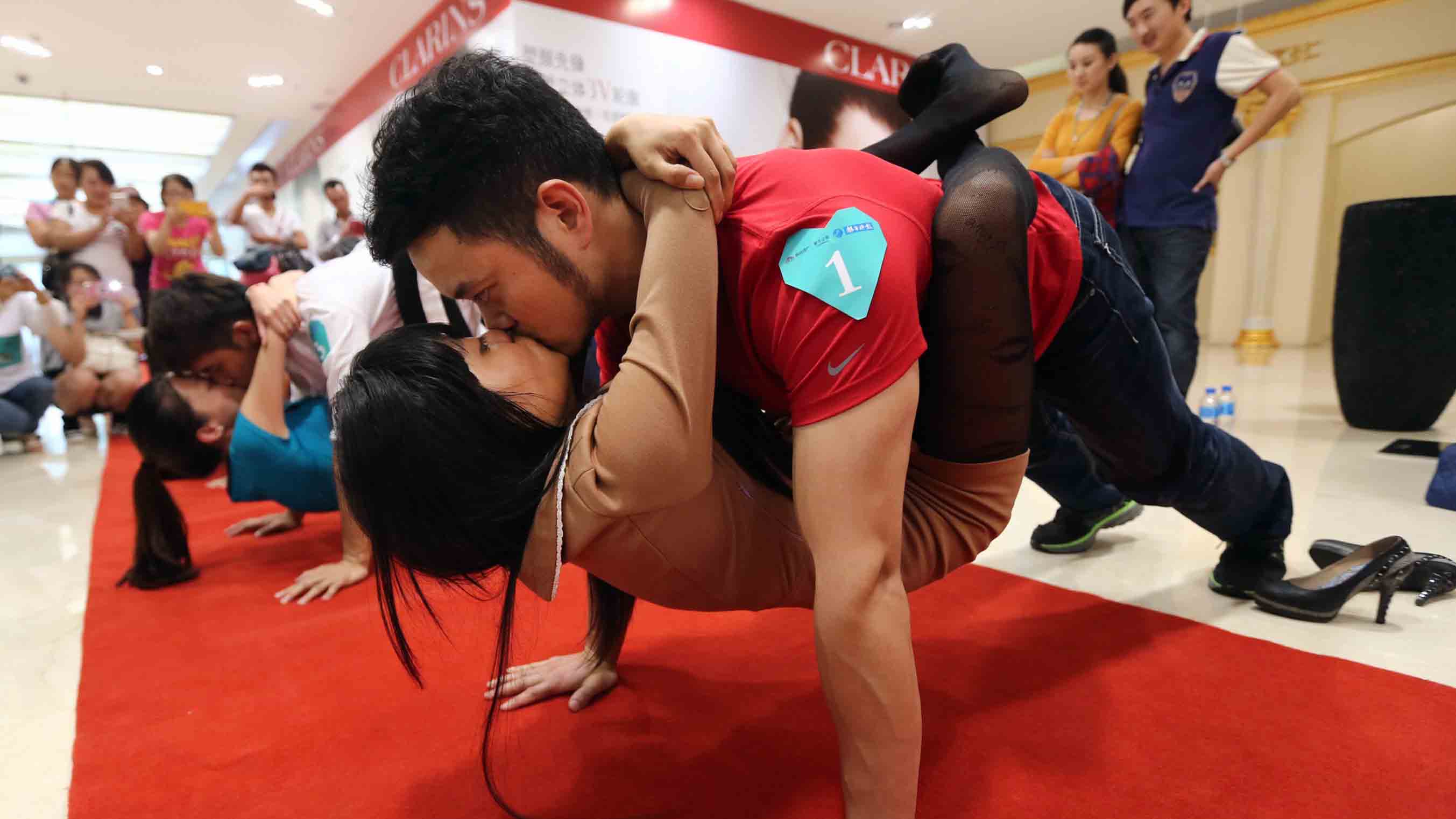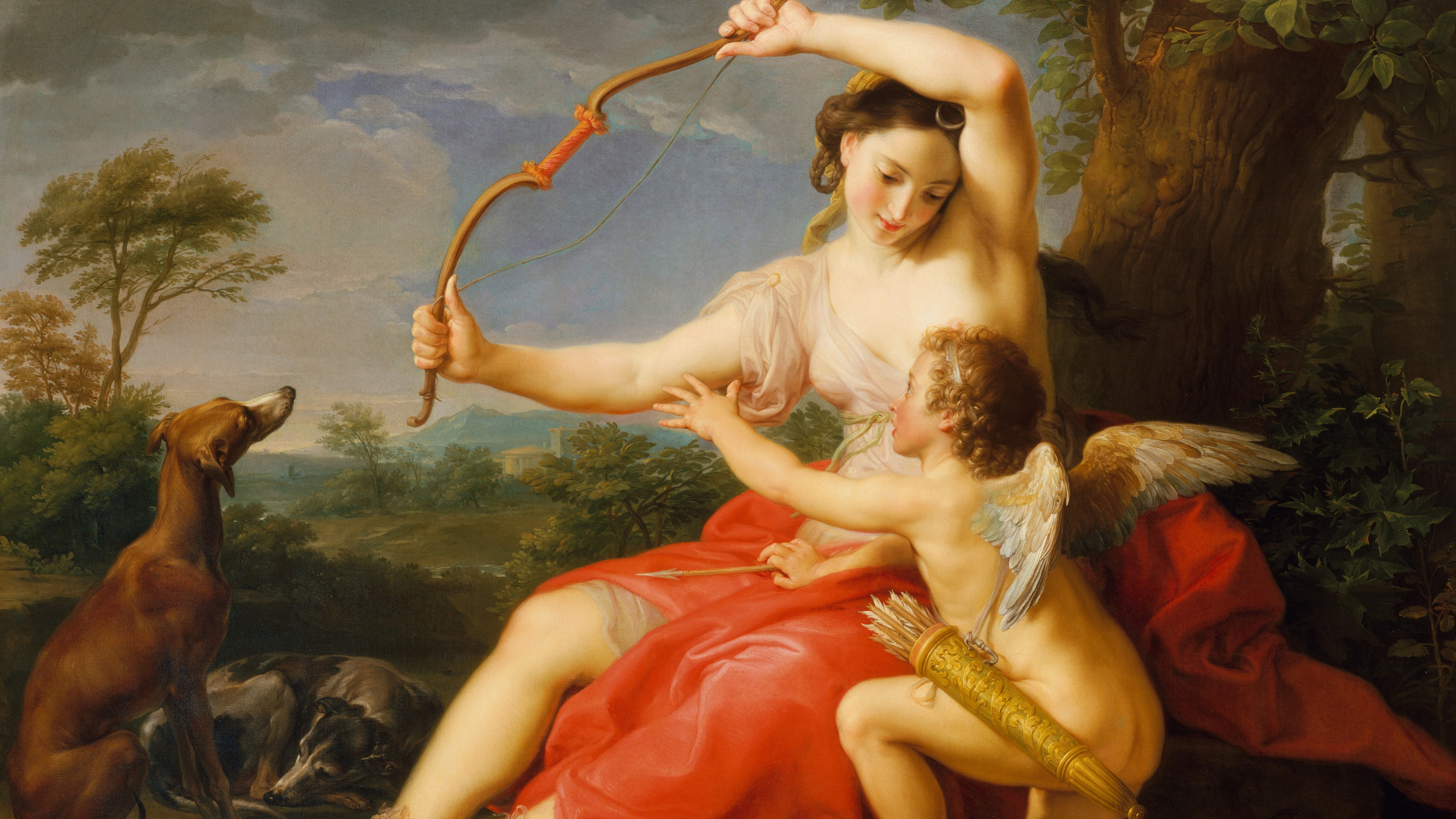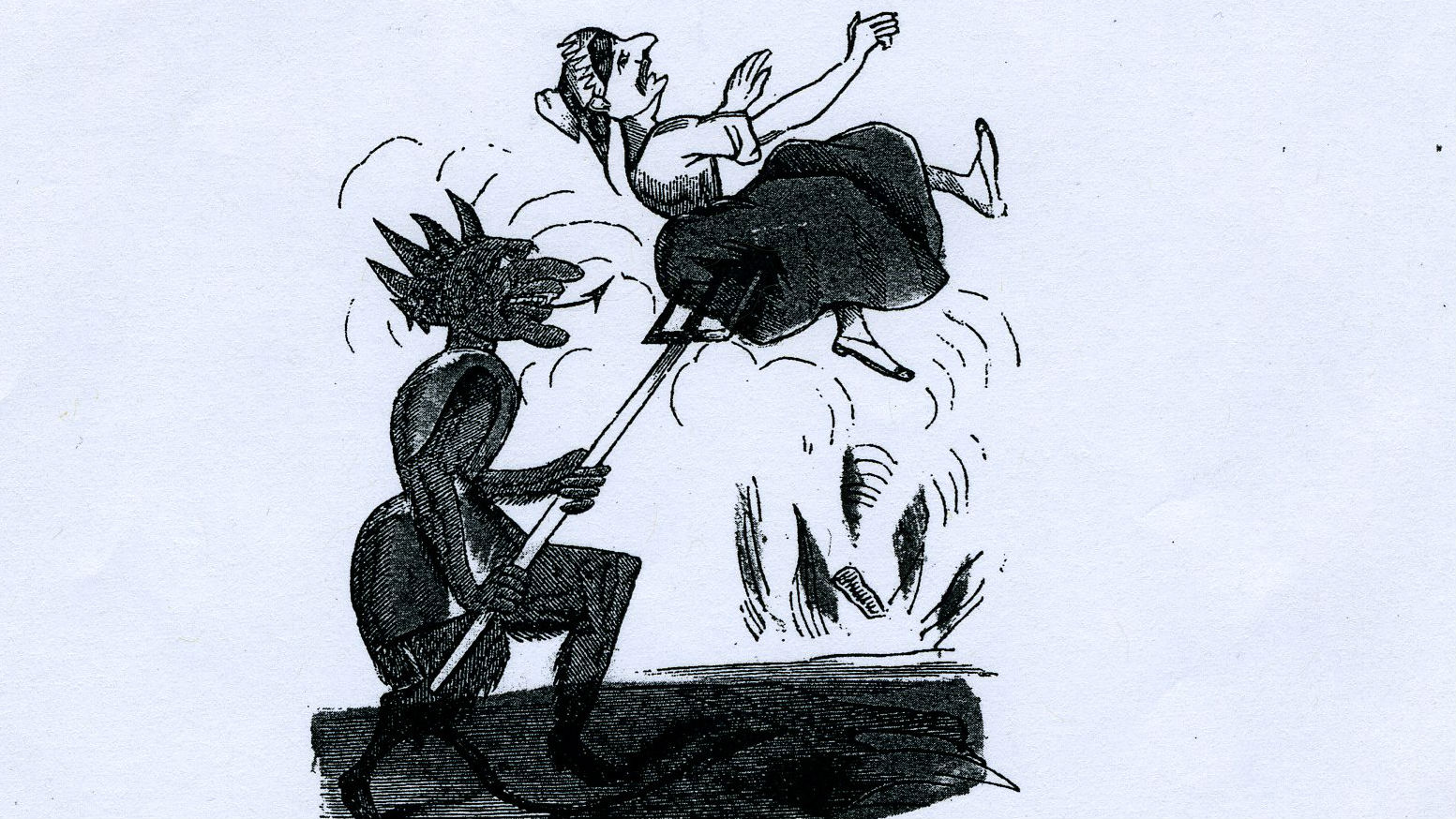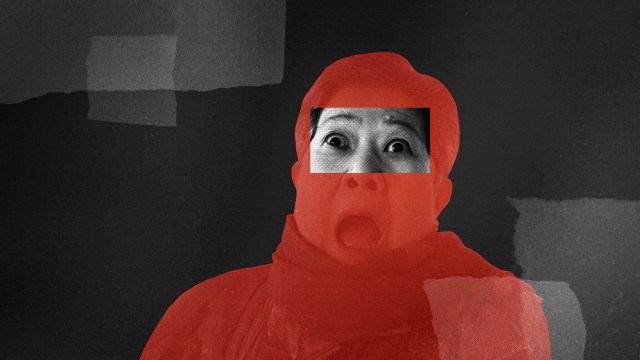Happy Valentine’s Day — in 10 maps!
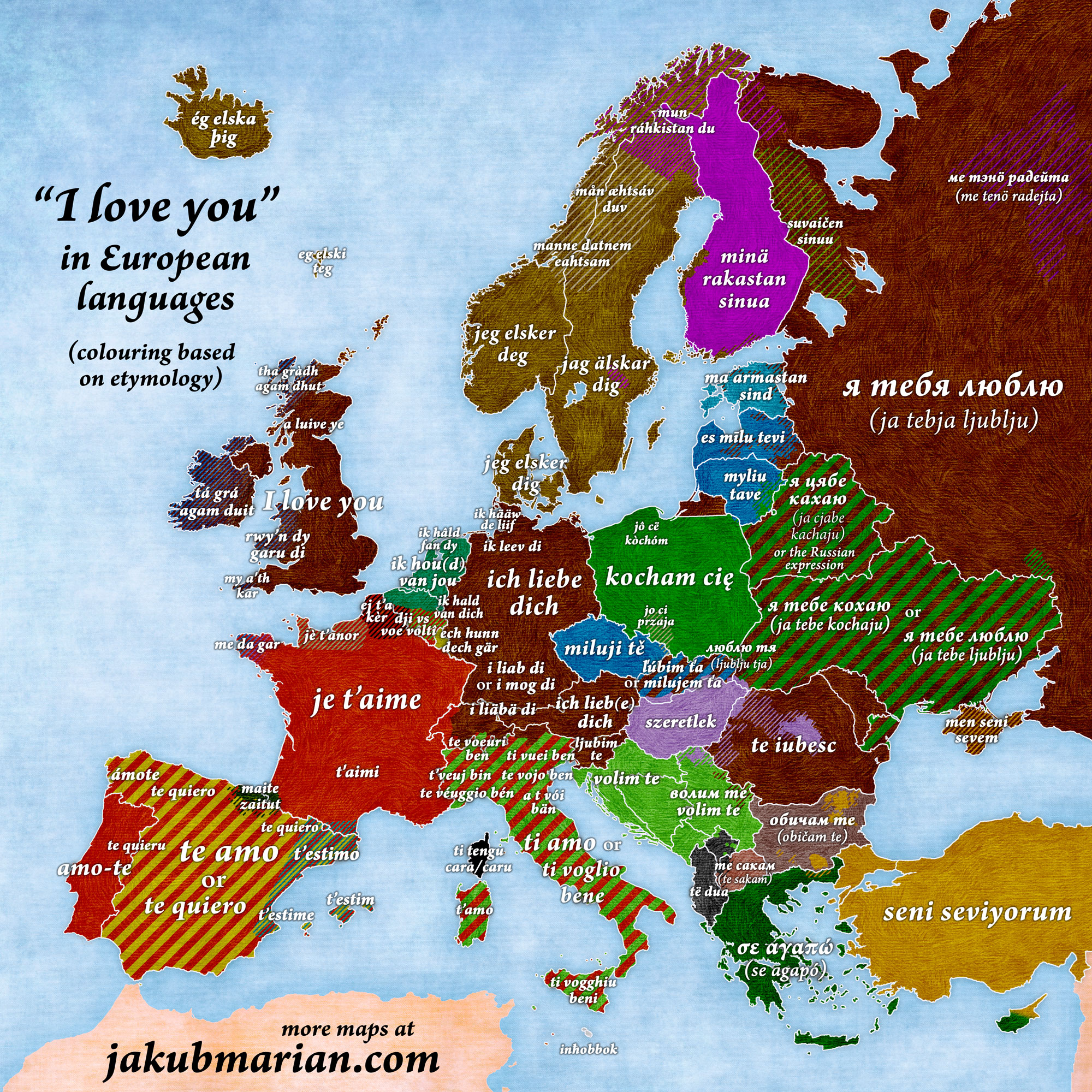
- The very first Valentine was written by St. Valentine himself — or so pious legend has it.
- Over time, many stories and traditions have attached themselves to the patron saint of love.
- Here are ten maps that approximate what Valentine’s Day means to us today.

The very first Valentine was written by the 3rd-century Roman saint of that name. Before his execution, he wrote to Julia, the daughter of his jailer, whom he had been treating for her blindness, urging her to remain faithful. As she opened the note — signed “from your Valentine” — her sight was restored.
That’s just one of the many stories and traditions that have attached themselves to the popular patron saint of courtly love (and, incidentally, of beekeepers). On the day of his feast — February 14, first established in 496 AD — pilgrims looking for love pray for his intercession at Whitefriar Church in Dublin, which holds some of his relics: a bit of bone and a tiny blood-soaked piece of cloth.
Other (alleged) relics of St. Valentine can be found in churches throughout Europe, including in the Basilica of Santa Maria in Cosmedin in Rome, which exhibits the flower-crowned skull of St Valentine. Modern Valentine’s Day celebrations usually don’t involve such dismal props. But if you’re in love, or looking for love, what does February 14 mean for you? Without pretending to provide the whole answer, here are ten cartographic approaches to Valentine’s Day.
“I love you” in European
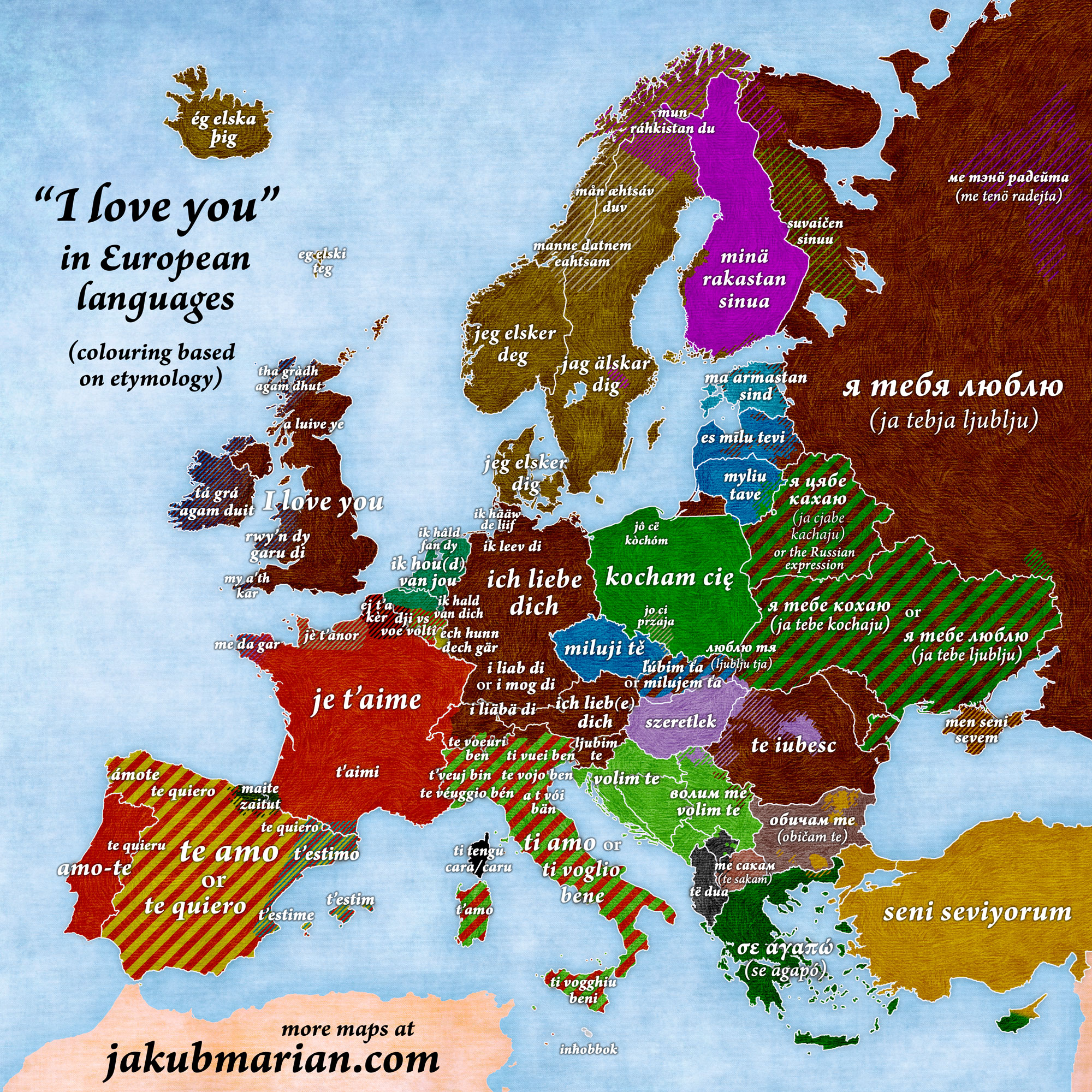
How do you say, “I love you,” in Europe? Well, that depends on where exactly you are on the continent, with its dozens of languages to choose from. The phrase is usually fairly intelligible within each of the three main European language families — Germanic, Slavic, and Romance — and somewhat familiar between them.
But in any of the smaller language families and isolates sprinkled across Europe, the declaration of love sounds a bit weird (to non-native speakers, at least). In Basque, “I love you” is maite zaitut, in Hungarian szeretlek, and in Scottish Gaelic tha gràdh agam dhut, quite a mouthful. For my money, the most ominous version is in Finnish: mina rakastan sinua; according to Icelandic comedian Ari Eldjárn, it sounds like “pay the money by Wednesday.”
What to give your Valentine?

If you have a special someone, you’ll want to give them a special something for Valentine’s. But what? An analysis of Google searches per state reveals answers ranging from plain vanilla (flowers in Alaska and Maryland) via uber-romantic (poetry in Alabama and Maine) to kinky and hardcore (sex toys in Wyoming, cheap sex toys in Tennessee).
Some states seem like soul mates cruelly kept apart by geography, like Louisiana (silk sheets) and Georgia (satin pajamas), or Washington (bear skin rug) and Wisconsin (fur coat). Others give off a decidedly unromantic vibe. We get the feeling that West Virginia (cheap gifts) will definitely be single this time next year.
A map of the empire of love
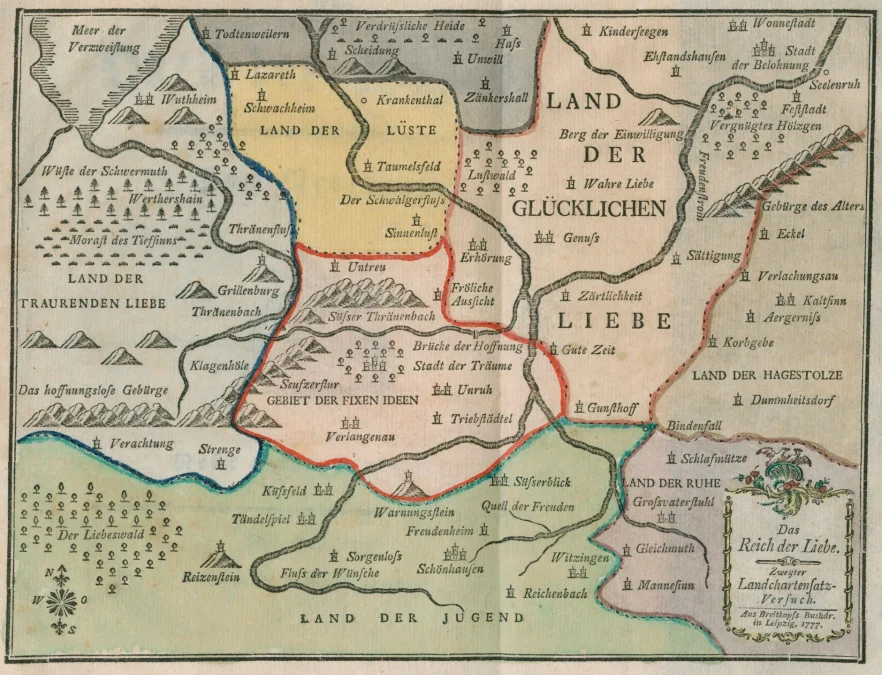
If love is a journey, then it helps if you have a road map. That’s the idea behind Johann Breitkopf’s 18th-century map of the “Empire of Love,” a colorful example of cartography as a metaphor for life.
We all start out from the Land of Youth (“Land der Jugend,” bottom), with such localities as Charm Castle (“Reizenstein”) and Carefree (“Sorgenlos”). But then it’s easy to get lost in the Land of Obsessions (“Gebiet der Fixen Ideen”), Bachelor Country (“Land der Hagestolze”), the Land of Lust (“Land der Lüste”), or the Land of Mourning Love (“Land der Traurenden Liebe”).
We should aim for the Land of Happy Love (“Land der glücklichen Liebe”) — alarmingly, just one among many destinations. Should we reach it, we will travel to Reward City (“Stadt der Belohnung”), Bliss Town (“Wonnestadt”), and many other of its joyful places.
For more on this map, see also Strange Maps #59.
A heart-shaped walk around Boston

In cartography, the Werner projection produces a pseudoconic equal-area map — which is another way of saying “heart-shaped”. In honor of that projection, and of a Valentine’s Day some years ago, Andy Woodruff decided to go on a heart-shaped, GPS-tracked walk around Boston. It took him 10.44 miles to complete the shape — or, according to the whimsical local unit of measurement, 9,872 smoots.
The left bump of the heart is at the intersection of Webster Avenue and Columbia Street, the right one is in Charlestown, and the pointy bit at the bottom is near the unexplored regions of South End. Re-tread these paths at your own peril!
Fortunately, she said yes
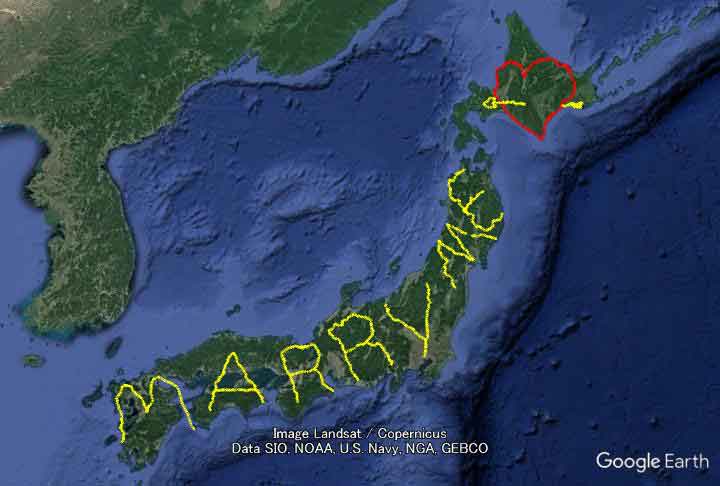
GPS drawings are fun, but only if you’re not that competitive, as there’s always someone doing a bigger one. Unless you’re Yasushi Takahashi. The Japanese artist a.k.a. Yassan is the current record holder in the Guinness World Records category “Largest GPS Drawing by an Individual.”
For six months, he traversed the Japanese archipelago from north to south, his 4,451-mile (7,164-km) car trip spelling out the words “MARRY ME.” For good measure, he also drew a heart shape across the northern island of Hokkaido. Fortunately (and in some reports, “finally”), she said yes.
The “most loving” cities per country
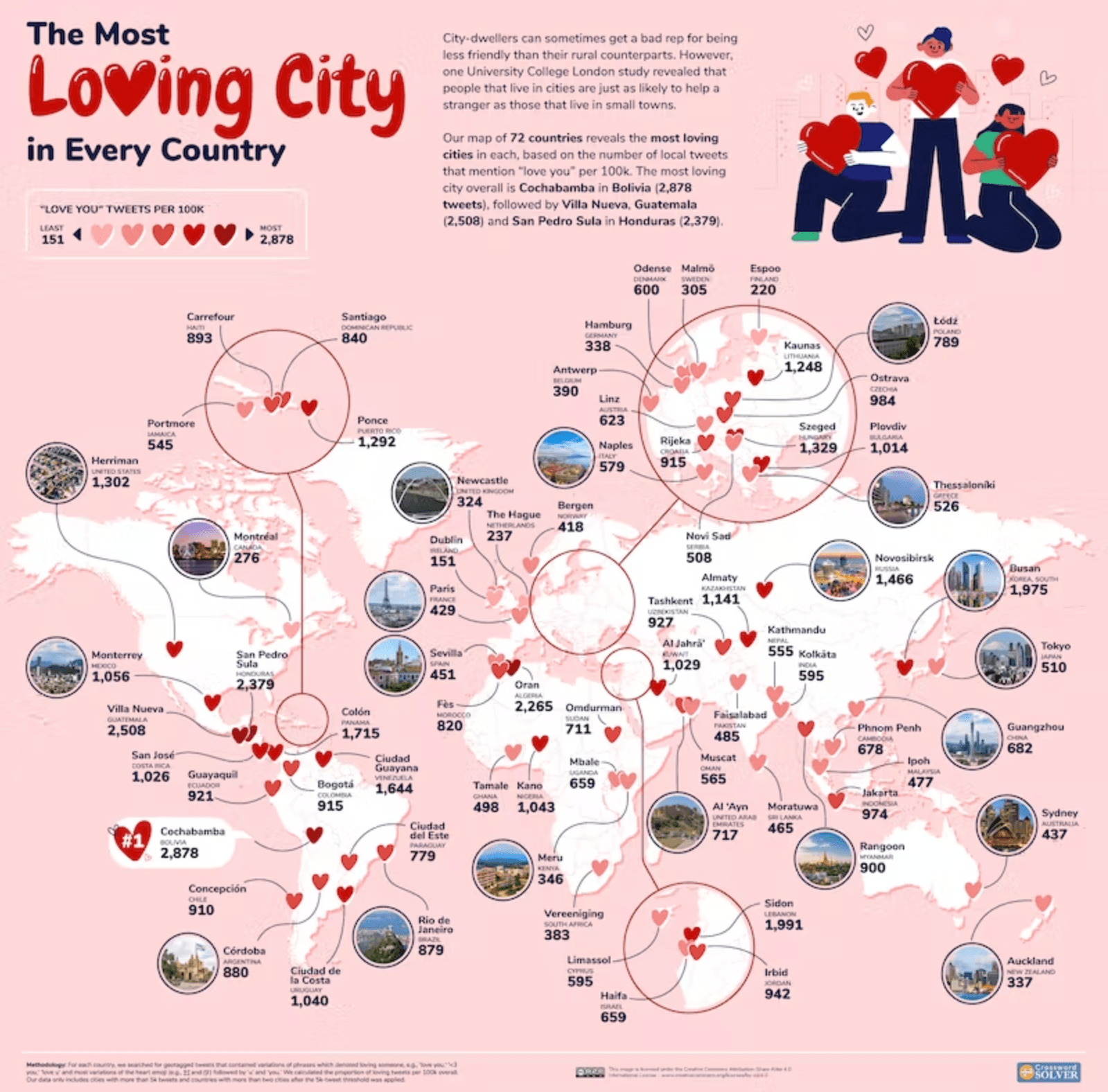
How do you determine the most loving city in a country? (Sarcasm on.) Before Twitter, this would have been impossible. But now we can analyze tweets to find out which locality uses the most terms of endearment. This is perhaps a less than perfect yardstick, but remember: Before Twitter, there was nothing.
Based on 15 million tweets from 72 countries, a study by renowned psephologists Crossword Solver found that the most loving city in Canada was Montréal; in Mexico, it’s Monterrey. The surprising winner in the U.S. was Herriman, a recent boomtown of about 55,000 people in Utah. The most loving cities globally are all in Latin America: Cochabamba in Bolivia, followed by Villa Nueva, Guatemala and San Pedro Sula in Honduras.
So, is any of this data valid? Locals will scoff at the suggestion that the “most loving” cities in the UK, France, and Belgium are Newcastle, Paris, and Antwerp, respectively. And perhaps the same goes for other cities highlighted on this map. But perhaps the people in those places are a lot nicer online than in real life. (Sarcasm off.)
The minefield of 19th-century love
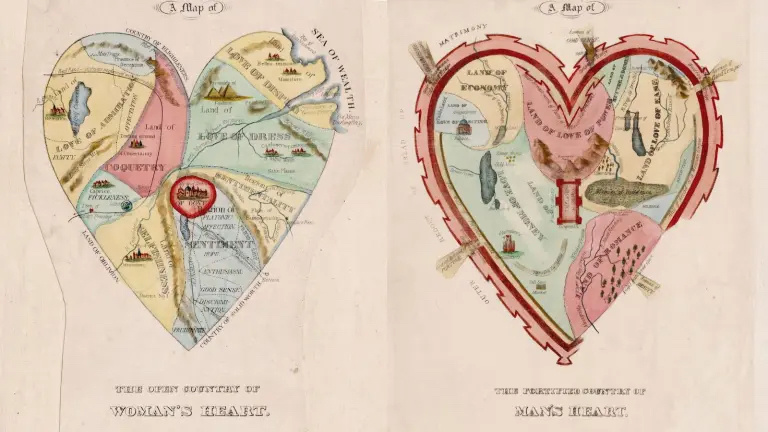
Love is never easy, but it’s particularly difficult if you’re a woman in 19th-century New England. On the left is a map of the “Open Country of a Woman’s Heart,” published in Connecticut around 1840. It shows her path toward matrimony to be a minefield. On the right is a companion piece, showing “The Fortified Country of a Man’s Heart,” a citadel to be conquered by the poor woman who is also treading through the aforementioned minefield. It seems like a miracle anyone got married back in those days.
For more on this map, see also Strange Maps #1102.
Postmarked Valentine, Nebraska
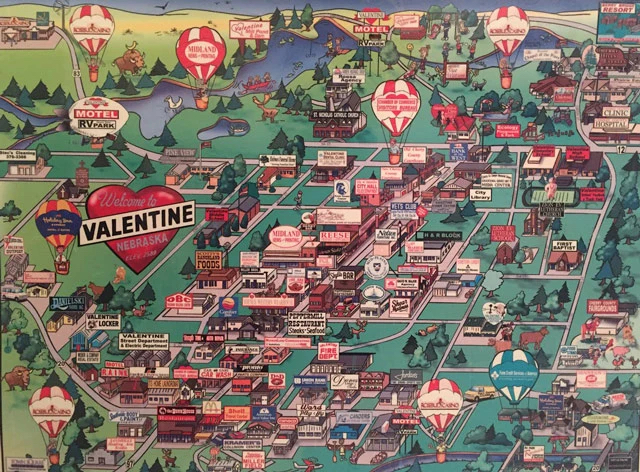
Valentine in Nebraska is the only city in the U.S. that carries the name of the patron saint of love. But there are two caveats: (1) There are half a dozen smaller towns and unincorporated communities with the same name; and (2) the city was actually named after Nebraska politician Edward K. Valentine.
But those are minor details, which Valentine, Nebraska won’t let get in the way of its unique status as America’s City of Love. Each year ahead of February 14, thousands of letters and parcels flow into the local post office, which re-mails them with a special Valentine’s Day postmark and verse.
There are many other reasons to visit this friendly little city, but one is of particular interest to map fans. Until 1967, Valentine was a city split between two time zones. Main Street was the border between Mountain Time and Central Time. When clocks needed to be turned back an hour for Daylight Saving Time, the post office split the difference and turned its clock back by only half an hour.
One heart sticker per state
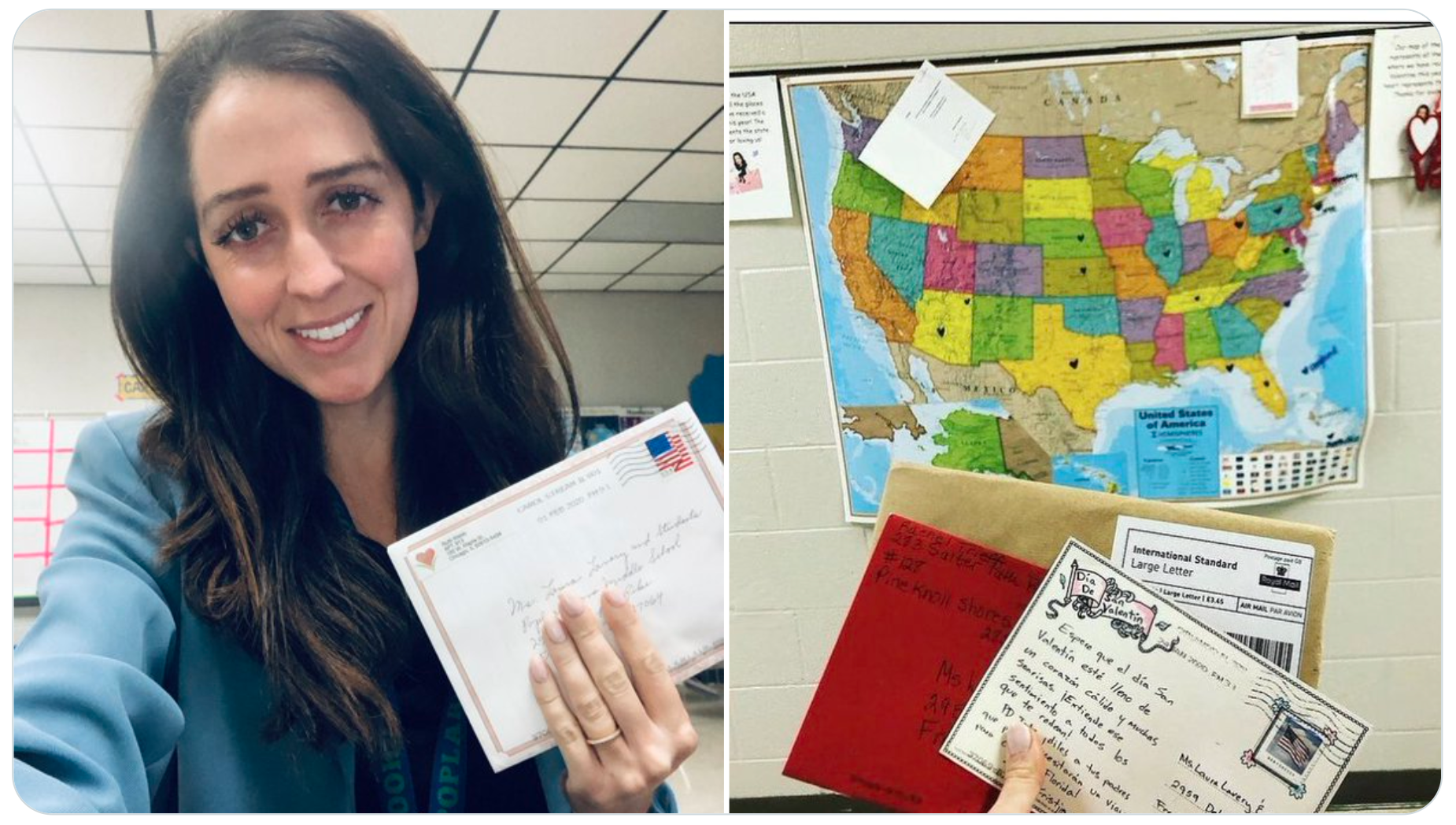
Laura Boyd teaches school in Franklin, Tennessee. “I want to surprise my students by having a Valentine from each of the 50 states. We will have a map of the USA and as we get a Valentine, we will place a heart sticker on the state. Please share!”
By the end of January, Ms Boyd and her class had received Valentine’s cards from about a dozen states. Will they hit 50 by the 14th? Well, if not this year, then the next. Spread the word! (And the love).
All the single ladies — and gentlemen
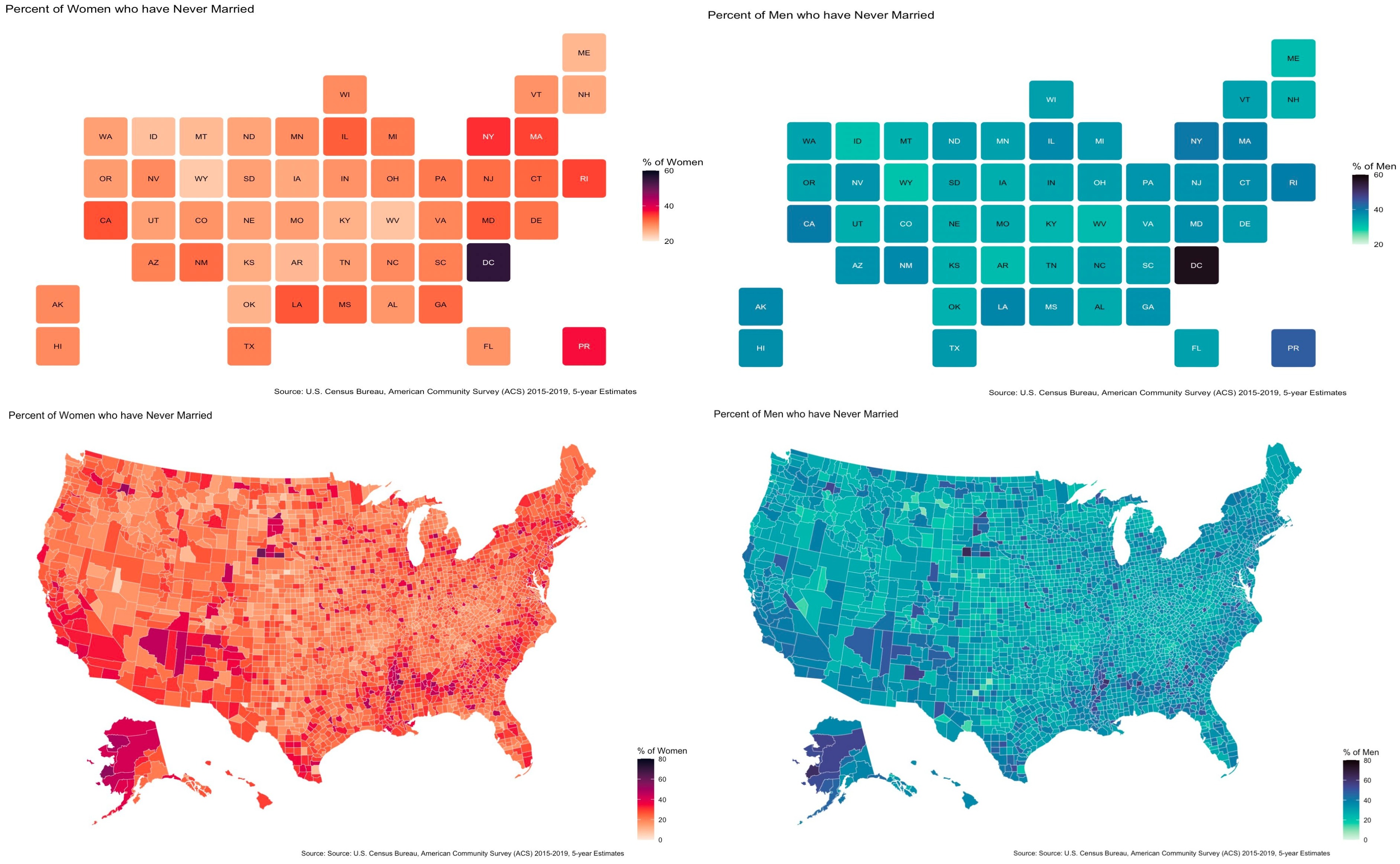
The day after Valentine’s Day is Singles Awareness Day. These maps from 2019, based on U.S. Census data, show the share of men and women in the U.S. who have never married (darker means more unmarried people). On the top are two cartograms, showing results per state; the two maps at the bottom better reflect the geographic spread.
On the cartograms, Washington DC stands out as a marriage desert (or, if you will, a singles oasis). The lightest colored (that is, the least unmarried states) tend to be rural states in the West. On the maps, however, there are also large zones of unmarried bliss in the southwest and in the northern prairies.
Quick, send St. Valentine’s shinbone to Nebraska!
Strange Maps #1192
Got a strange map? Let me know at [email protected].
Follow Strange Maps on Twitter and Facebook.
